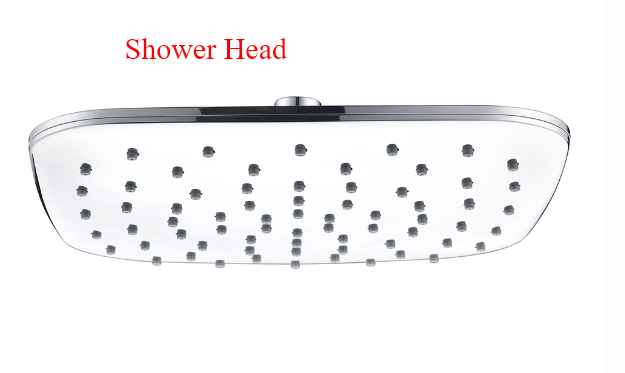Are you tired of the constant drip, drip, drip sound coming from your sink? Or perhaps you’ve noticed a pool of water collecting underneath it? A leaking sink is not just annoying, but it can also cause significant damage over time. But don’t worry. We’re here to help you become your own plumber and tackle that leak once and for all.
This comprehensive guide will walk you through various methods to fix a sink leaking underneath. We’ll start by teaching you how to repair damaged sink pipes, then move on to tightening those loose nuts and bolts. Next, we’ll cover how to replace worn-out sink gaskets, and finally, we’ll address the issue of a corroded sink flange.
By the end of this article, you’ll be well-equipped to stop that leak and save your home from potential water damage. So, let’s get started!
Causes of Sink Leaking Underneath
1. Damaged Sink Pipes
Damaged sink pipes are a common cause of leaks. Over time, these pipes can deteriorate, leading to cracks or breaks where water can seep through.
Excessive water pressure or freezing and thawing can expedite this deterioration process. Hence, regular inspection of sink pipes becomes crucial to catch any signs of damage early.
2. Loose Nuts and Bolts
Loose nuts and bolts in the sink assembly can also lead to leaks. These fasteners hold various parts of your sink assembly together, and if they loosen, water can escape through the gaps.
Continuous use and vibration can sometimes cause these nuts and bolts to lose grip. Even a slight loosening can result in a leak if not addressed promptly.
3. Worn-out Sink Gaskets
Sink gaskets are essential for maintaining a watertight seal. Over time, however, these gaskets can wear out, leading to leaks from your sink.
Exposure to water and cleaning chemicals can cause these gaskets to deteriorate. When this happens, they no longer create a perfect seal, causing water to leak.
4. Corroded Sink Flange
The sink flange is a critical part of the sink drain assembly. Over time, corrosion can eat away at the flange, causing it to lose its sealing capabilities and result in a leak.
Corrosion generally occurs due to prolonged exposure to water and harsh cleaning chemicals. A corroded flange causes leaks and can lead to more significant plumbing issues if not addressed.
How to Fix Sink Leaking
Let’s dive into the step-by-step guide on how to fix sink leaks. Each type of leak discussed above requires specific actions to resolve it. By following these instructions, you can save the expense of hiring a professional plumber.
Fixing Damaged Sink Pipes
- Identify the damaged section of the pipe.
- If possible, isolate that section by turning off the water valve.
- Use a pipe cutter to remove the damaged section.
- Replace it with a new pipe section, ensuring it matches the original size and material.
- Secure the new pipe with slip couplings and tighten using a wrench.
- Turn the water back on and check for leaks to ensure the problem is resolved.
Tightening Loose Nuts and Bolts
- Locate the loose nuts and bolts.
- Use an appropriately sized wrench or pliers.
- Hold the nut with one wrench while you turn the bolt with another.
- Tighten until secure, but avoid over-tightening as it can cause damage.
- Check for leaks to ensure the issue has been fixed.
Replacing Worn-out Sink Gaskets
- Identify the worn-out gasket.
- Shut off the water supply and remove the worn-out gasket.
- Clean the area where the old gasket was located.
- Purchase a new gasket that matches the size and type of the old one.
- Install the new gasket and turn the water supply back on, checking for leaks.
Addressing Corroded Sink Flange
- Disconnect the water supply and remove the corroded flange.
- Clean the area thoroughly to remove any residual corrosion.
- Purchase a new flange that matches the old one in size and material.
- Install the new flange, making sure it’s securely fitted.
- Reconnect the water supply and ensure there are no leaks.
Prevention Tips
You don’t have to wait until your sink starts leaking to take action. Here are some preventative measures you can take to avoid a sink leaking underneath in the future:
- Regular Inspection and Maintenance: Consistent check-ups on the condition of your sink pipes and fittings are crucial in preventing leaks. Therefore, performing regular inspections and maintenance can help locate potential issues early, such as signs of wear and tear or corrosion, to prevent further damage.
- Correct Installation and Usage: Ensuring the proper installation and use of your sink and plumbing fixtures can significantly reduce the chances of leaks. Over-tightening components can lead to cracks or a loss of sealing ability. Therefore, adhering to the manufacturer’s specifications is important when installing and using these components.
- Quality of Parts: The quality of parts used in your sink and plumbing system is vital in preventing leaks. Using high-quality materials that are less likely to fail can save you from future leak-related issues.
- Cleanliness and Upkeep: Regular cleaning of your sink and drain can help avoid build-up that could eventually lead to leaks. As noted by rosenthalplumbing.com, clogs caused by grease and food particles can create pressure in the pipes, causing leaks.
- Preventive Measures: Additional preventive measures, such as using an under-sink mat or tray or installing a leak detector, can protect against potential leaks. These ideas, suggested by standardrestoration.net, can be particularly helpful in preventing water damage under your sink.
Embrace Proactive Sink Care
A sink leaking underneath can be a symptom of various underlying issues, such as damaged pipes, loose nuts and bolts, worn-out gaskets, or a corroded sink flange. However, by adhering to the outlined preventative measures, such as regular inspections, correct installation, use of quality parts, and cleanliness, you can significantly reduce the chances of experiencing sink leaks.
Moreover, the step-by-step guide can enable you to address these issues independently, saving on the cost of professional plumbing services. Proactive care is key to maintaining a reliable and efficient sink system.


